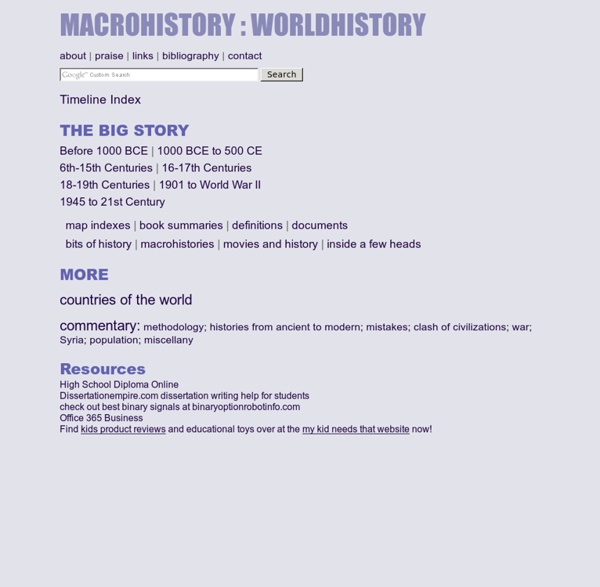



World History for Us All TEA Lighthouse Initiative Texas Essential Knowledge and Skills (TEKS) and the Advanced Placement Program* Welcome to the revised Lighthouse Initiative for Social Studies. The purpose of this Web site is to help Texas social studies teachers better understand how to approach curriculum, instruction, and assessment to assist their students in moving on to success in Advanced Placement Program* (AP*) courses and other advanced academic programs. The good news is that these are not divergent tasks. The key to understanding how these goals coincide is an appreciation of the link between curriculum, instruction, and assessment in the social studies classroom. Table of Contents PDF of All Site Documents This site was reviewed in spring 2008 for formatting consistency and adherence to standard copyright guidelines for educational materials. To link to urls for Web sites of educational resources referenced on this site, please copy and paste the complete url into your Internet browsers.
Teaching World History & Geography - Conceptual Frameworks What to teach: conceptual frameworks This is the second component of a world history and geography body of knowledge to be taught in school: ....... chronological narrative ....... conceptual frameworks ....... thinking strategies What are conceptual frameworks? It is the job of conceptual frameworks to connect and organize knowledge to make it more meaningful. The alphabet, for example, is an artificial structure imposed on spoken language that enables us to read and write. A review of literature from history education and cognitive research strongly suggests that conceptual frameworks, by whatever name, contribute to meaningful understanding and should be a major component of history education. Themes History and geography educators often speak in terms of "themes" that represent an interest in phenomena that are manifested across several historical periods and/or geographic locations, and thus may offer useful insights into how humans generally behave and how the world generally works.
The Flow of History Timelines of History 15 Minute History | A podcast for educators, students, and history buffs Host: Christopher Rose, Outreach Director, Center for Middle Eastern Studies, UT-AustinGuest: Fred M. Donner, Director, Center for Middle Eastern Studies, University of Chicago The story of Islam’s beginnings have been told and retold countless times. The traditional narrative says that the Prophet Muhammad, an illiterate orphan from the town of Mecca, became a prophet of God and founded a community that conquered much of the known world in little more than a century after his death. Our guest, Fred M. Listen to Podcast (mp3—right click to download) Continue reading Host: Joan Neuberger, Editor, Not Even PastGuest: Carla Kaplan, Professor of American Literature, Northeastern University During the explosion of African American cultural and political activity that came to be known as the Harlem Renaissance, a number of white women played significant roles. Listen to Podcast (mp3—right click to download) Continue reading Listen to Podcast (mp3—right click to download) Continue reading
Finnish Defense Forces Archive What you have in front of you is a unique collection of photographs from the Wartime Photograph Archives ("SA-kuva-arkisto" in Finnish). It contains some 160,000 photographs from Finland's Winter War, Continuation War and Lapland War. Most of the pictures were taken by Information Company (IC) photographers. Only the tones of the digitalised photographs have been slightly enhanced, otherwise the pictures are displayed in their original state. Photography in the additional war exercises of autumn 1939 and during the Winter War was completely random, and there was no time to arrange for systematic photography on the frontline. On the eve of the Continuation War in 1941, nine information companies (ICs) subordinate to the General Headquarters were formed. During Finland's wars, the negatives and paper prints were archived in the General Headquarters' Photography Division. Some general remarks about the annotations on the photographs. Most photographs have an annotation.
Holocaust Timeline Jump to: 1938 1939 1940 1941 1942 1943 1944 1945 1933 January 30, 1933 - Adolf Hitler is appointed Chancellor of Germany a nation with a Jewish population of 566,000. February 22, 1933 - 40,000 SA and SS men are sworn in as auxiliary police. February 27, 1933 - Nazis burn Reichstag building to create crisis atmosphere. February 28, 1933 - Emergency powers granted to Hitler as a result of the Reichstag fire. March 22, 1933 - Nazis open Dachau concentration camp near Munich, to be followed by Buchenwald near Weimar in central Germany, Sachsenhausen near Berlin in northern Germany, and Ravensbrück for women. Terms of use: Private home/school non-commercial, non-Internet re-usage only is allowed of any text, graphics, photos, audio clips, other electronic files or materials from The History Place.